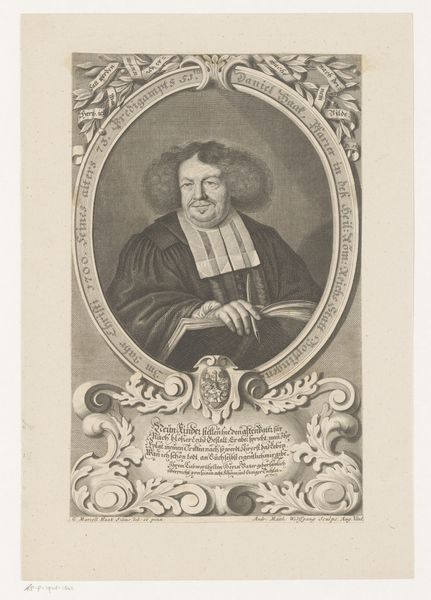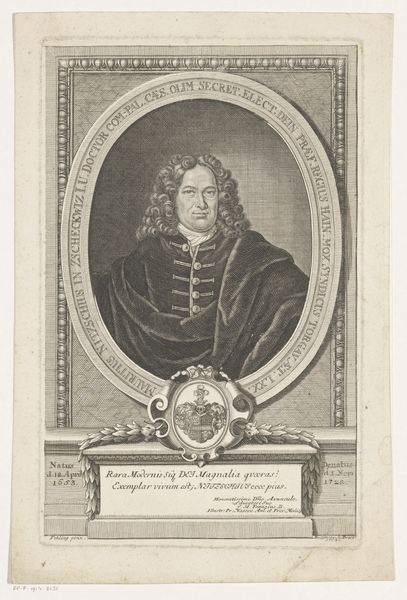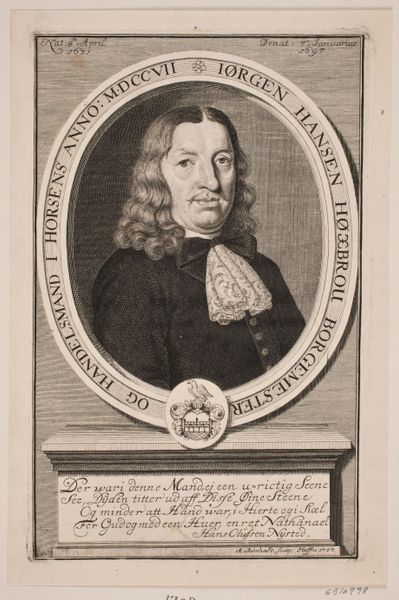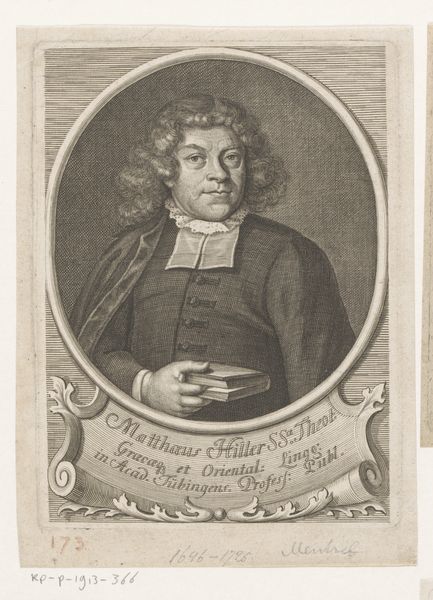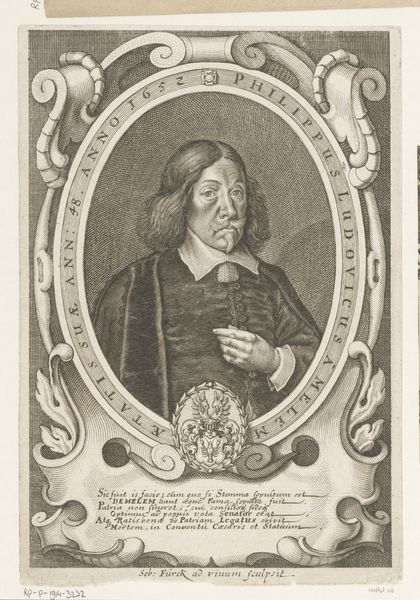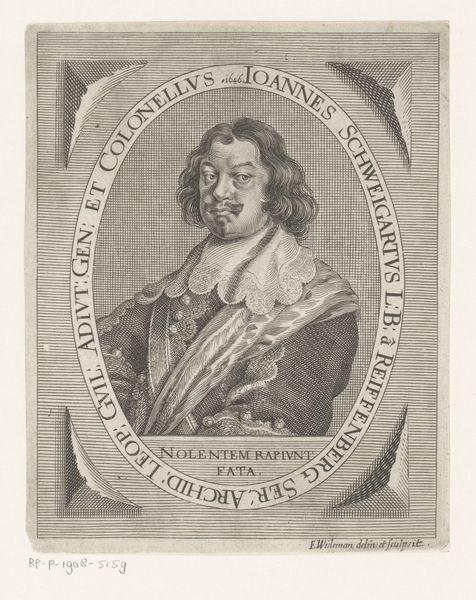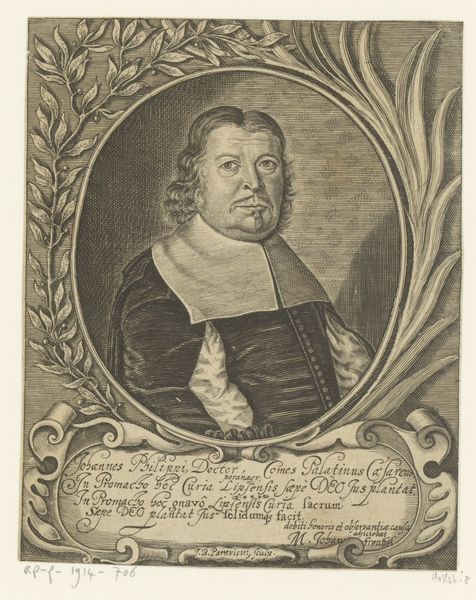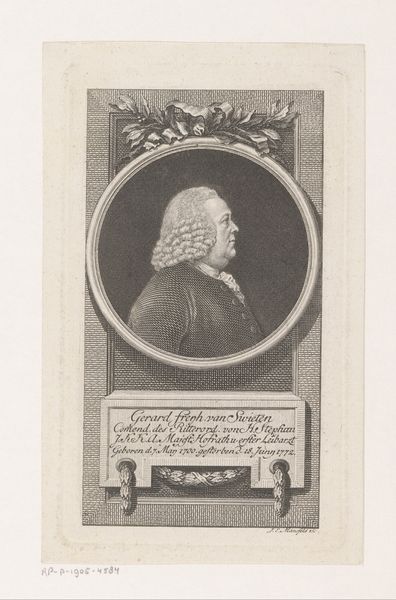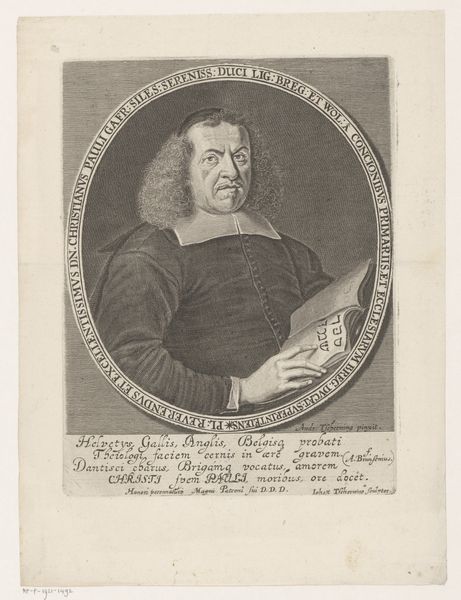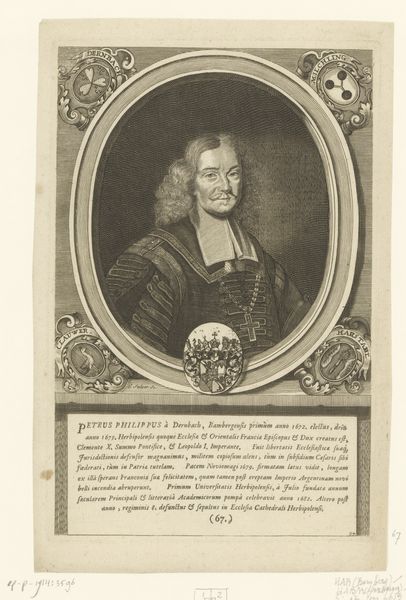
engraving
#
portrait
#
baroque
#
caricature
#
engraving
Dimensions: height 193 mm, width 148 mm
Copyright: Rijks Museum: Open Domain
Curator: The work before us, "Portret van Ludwig von Hörnigk op 44-jarige leeftijd," an engraving by Sebastian Furck from 1644, presents a compelling example of Baroque portraiture. Editor: This piece feels very formal, almost stoic. The subject's intense gaze and the intricate details in his clothing and the surrounding ornamentation give it a real sense of gravity. What stylistic elements define this work for you? Curator: Note the precise use of line and shadow. The density of engraved lines models the forms and creates a textured surface across the entire composition. Do you observe how the oval frame, with its flourishes and inscriptions, functions as an integral part of the portrait rather than just a border? Editor: Yes, the frame feels like an extension of the subject’s personality or status, almost as if the visual language used on the portrait subject itself were bleeding into the frame and then being used to amplify the work overall. Curator: Precisely. It emphasizes the Baroque aesthetic – an interest in intricate detailing and a unified composition. The varying textures created through the engraving technique are critical; they define form and surface, light and shadow. Consider how these details, coupled with the Latin inscription, communicate specific meanings. Editor: It's like every line has a purpose, a deliberate stroke contributing to the overall impact of the portrait. It definitely makes me think about the power of details. What have you taken away from the portrait today? Curator: My primary take away from analyzing Furck's work is seeing how visual forms work as structural devices to create symbolic meaning. The density and detail tell a story.
Comments
No comments
Be the first to comment and join the conversation on the ultimate creative platform.
